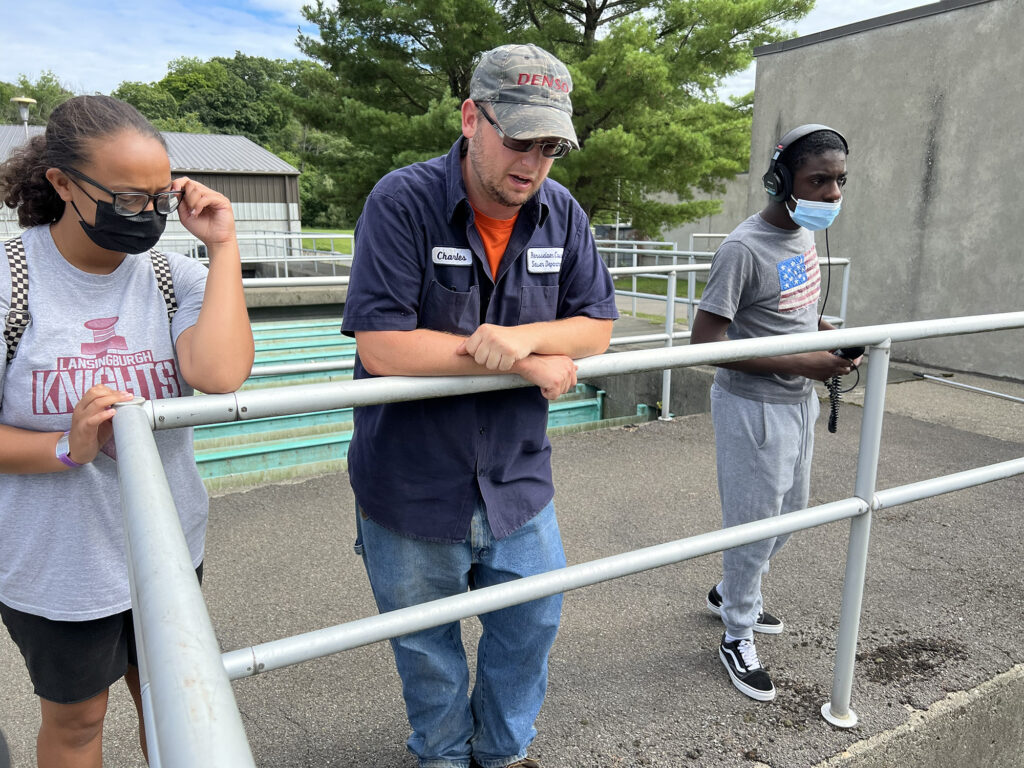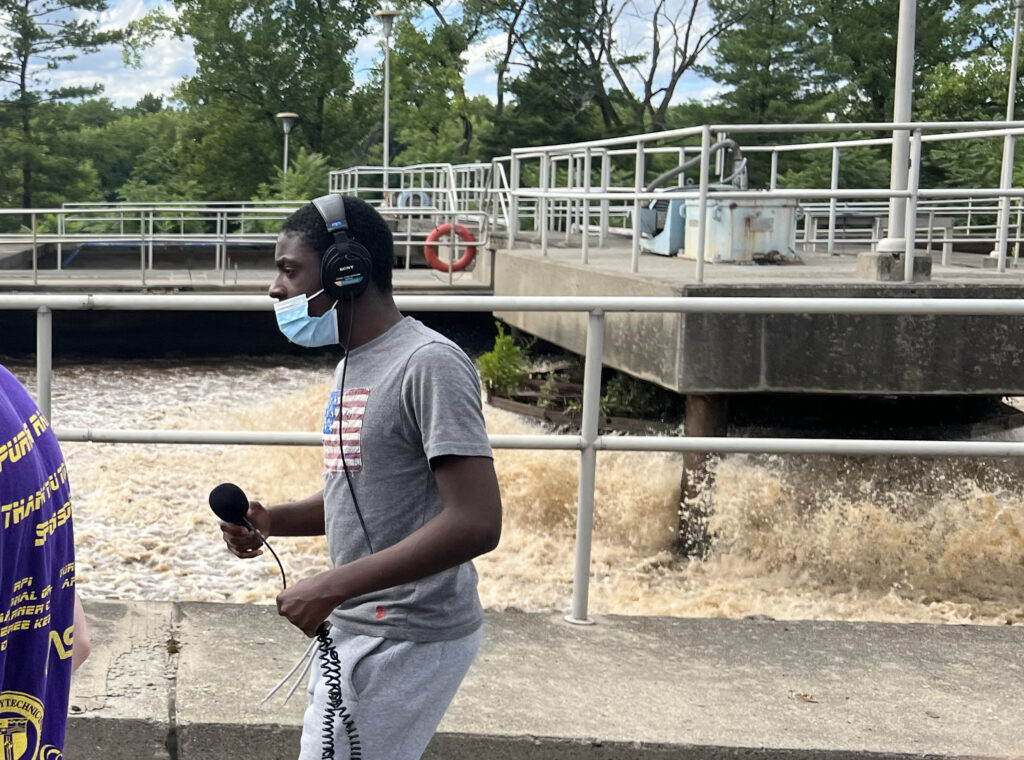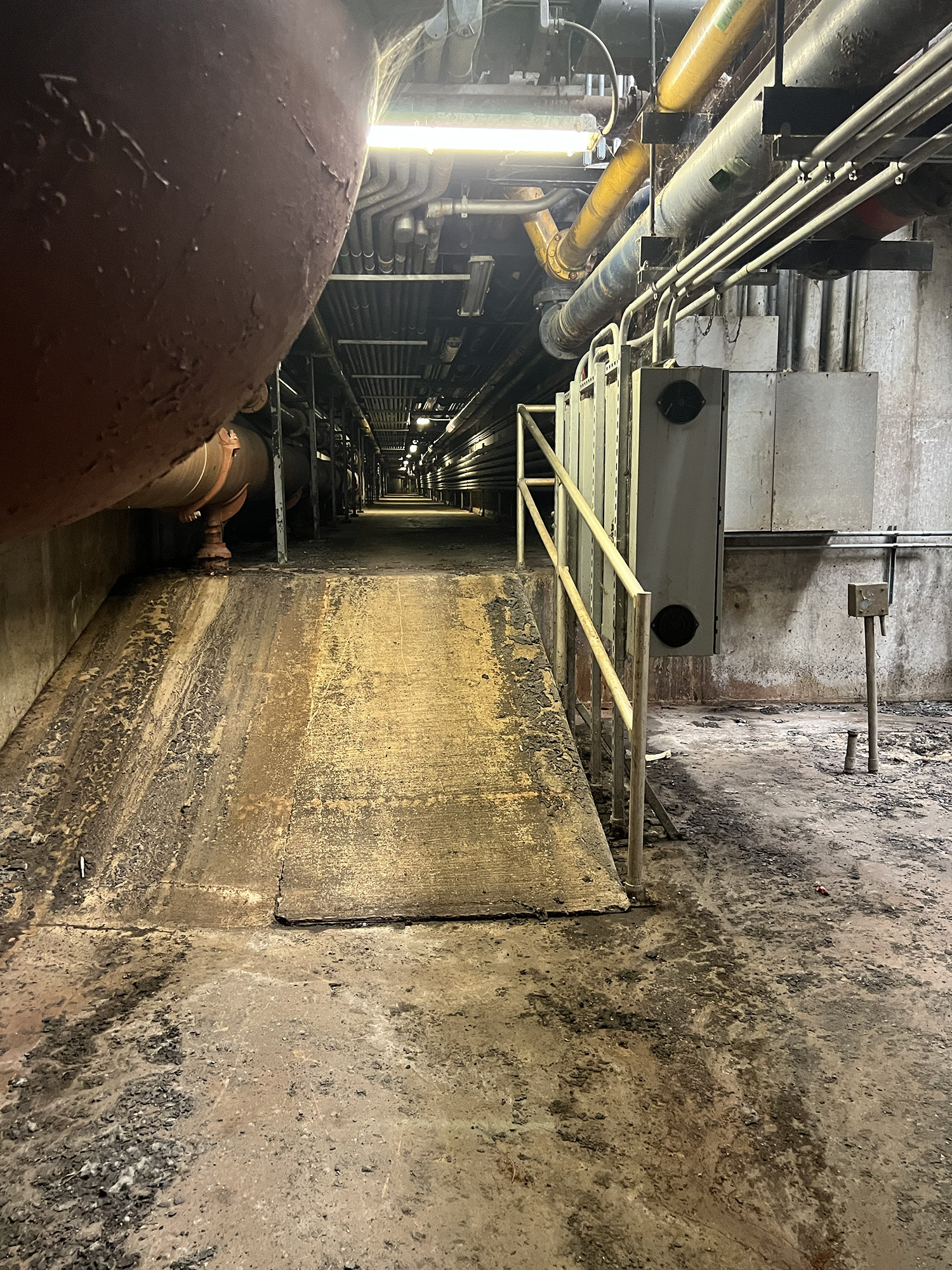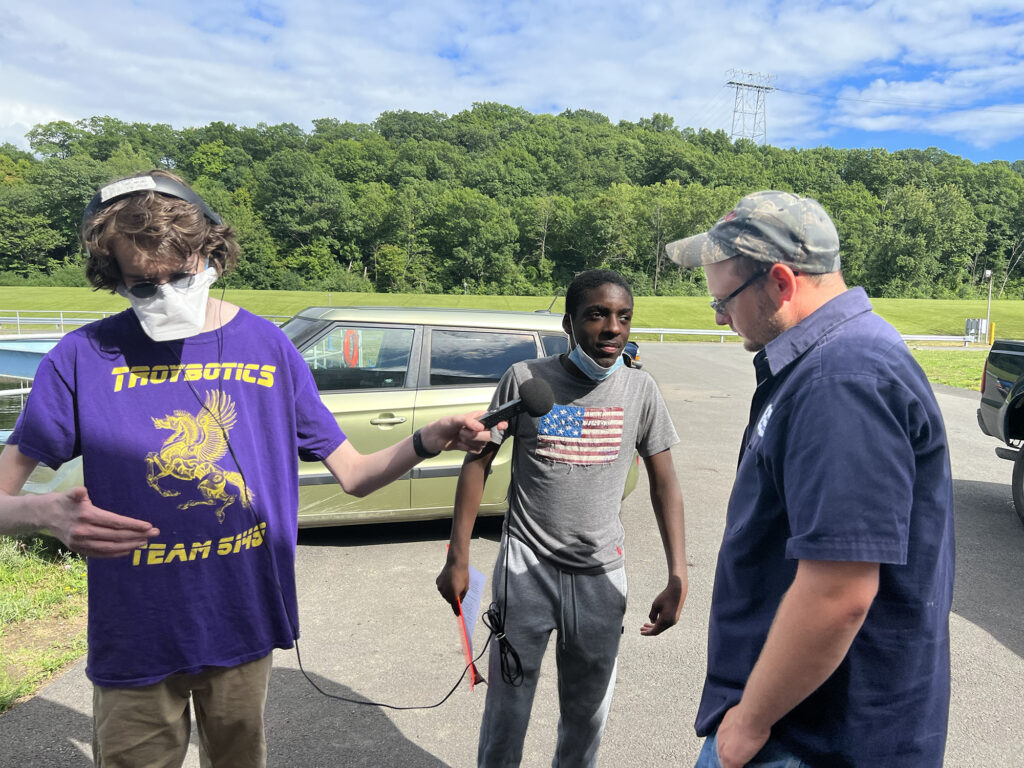
Week 6 of Source to Estuary found us tracing our wastewater out of the sewer system and four miles south along the Hudson River, where it gets treated at the Rensselaer County Wastewater Treatment Plant. We were greeted at the entrance to the treatment plant by Charles Remington, a plant operator who has worked at the plant for nine years. The plant is located right on the eastern bank of the Hudson, across the river from the town of Menands. Charles estimated the plant processes between thirteen to fourteen million gallons of water a day in the summer months, before it discharges the processed water back into the Hudson at the plant’s southern end. Muzzamil did an interview with Charles, included at the bottom of this page.

From removing bulky items like rags, plastic bags, and other trash, to straining off grease, to digesting nutrients with help of bacteria in massive aeration ponds, we got a close look (and smell!) at an essential process that prepares the water from our sewers to return to the Hudson River without spreading disease or contamination. Fellows asked questions about how UV light versus chlorination works to prevent bacterial spread (this plant uses UV light!) and how the methane and solid waste that are byproducts of the process get used. We were glad to learn the plant is able to capture the methane from its digesters to power equipment on site, and intrigued to learn that the solid waste, which has nutrient qualities suitable for use as fertilizer, is difficult to transport and is leading the plant team to experiment with different modes of processing and packaging it.

For the final portion of the tour, Charles invited us down into a whole underground world of tunnels that parallels the aboveground length of the plant, a maze of pipes and equipment that transport liquids, “sludge” (a technical term!) and other elements of the treatment process. The landscape down there was fascinating, but we were very grateful to ascend back to the surface and spend some time looking at the idyllic Hudson River view in front of the plant.

Charles kindly answered a range of interview questions for us, which will become part of our growing series of Source to Estuary segments for the Hudson Mohawk Magazine. He described how the plant is upgrading to get newer equipment and grow its capacity, with one goal being to process more water so that less of it our sewage ends up directly in the river during heavy rainfall events. Of course, fellows are very familiar with the concept of combined sewer overflows (CSOs) as they are part of what contribute to the high bacterial counts we get in some of the water samples collected around the Capital Region and processed at the Water Justice Lab. During Week 7, we’ll visit some CSO locations on Albany’s waterfront and learn about some onsite mitigation methods.
